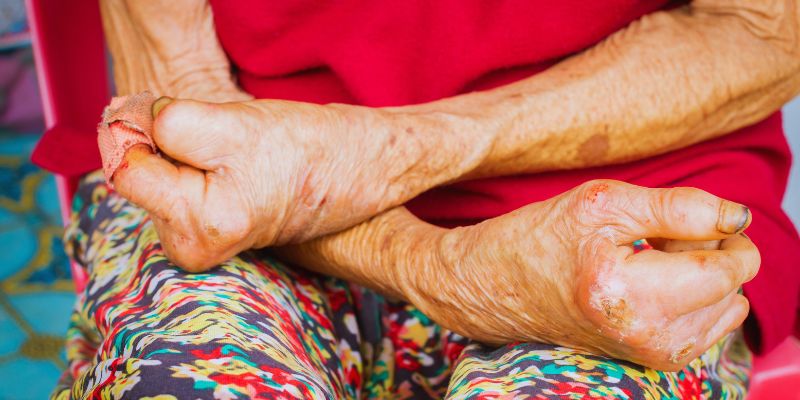How to Treat Rickets: Effective Remedies You Should Know About
Rickets is a disorder that weakens bones, often resulting from a vitamin D deficiency. Children suffering from this disorder have fragile bones and growth problems. A poor diet and little sun exposure could influence its development. Early identification and treatment of rickets is vital to avoid problems. Many times, treatments center on fixing inadequacies and enhancing general bone condition.
The greatest remedies—including dietary adjustments, supplements, and doctor visits—will be covered in this guide. It will also look at how changing behavior could help in recovery. Parents and other caregivers have to know these treatment choices if they are to enable youngsters to develop better and stronger. Read on to discover practical strategies for treating rickets and advancing improved kid bone health.

What Is Rickets?
Children with rickets have impaired bone development, resulting in fragile bones. A vitamin D deficiency usually causes it since the body utilizes it to absorb phosphorus and calcium. Without enough vitamin D, the body cannot sustain appropriate levels of these minerals, which results in growth issues and bone abnormalities. Rickets commonly cause bowed legs, thickened wrists or ankles, and slowed development.
Children suffering from this disorder may also have muscle weakness and pain. Children six months to two years old are most likely to get rickets since their bones are still forming. It is sometimes connected to inadequate sun exposure, poor diet, or medical disorders impairing nutritional absorption. The good news is that exposure to sunlight, correct diet, and vitamin D supplementation typically help to prevent or treat rickets. Promoting good bone development and avoiding long-term problems depend on early diagnosis and treatment.
The Causes of Rickets
Vitamin D deficiency mostly causes rickets since it disturbs the absorption of calcium and phosphorous required for strong bones. One often-cited cause of this shortfall is a lack of sunlight. Sunlight lets the skin naturally create vitamin D. Children living in areas with little sunlight—especially in winter—are more vulnerable. Another major factor is inadequate calcium and vitamin D consumption in the diet. Bone health depends on foods including fish, eggs, and fortified dairy products; their lack of a diet can cause rickets.
Some medical problems, such as chronic renal diseases or celiac disease, also compromise the body's capacity for nutrient absorption or processing. Underdeveloped nutritional stores could potentially put premature babies in danger. Customizing appropriate treatments depends on the underlying causes being found. Parents and other caregivers can help to guarantee a child's normal bone development and growth by tackling these fundamental problems.
How to Treat Rickets?
Here are the effective strategies to treat rickets:
Dietary Changes to Treat Rickets
Management of rickets depends much on dietary changes. Foods high in vitamin D will aid in building bones. Great selections are egg yolks, dairy products supplemented with vitamins, and fatty seafood like salmon. Increasing calcium-rich foods like milk, cheese, and leafy greens are just as crucial. Children with a balanced diet will get the nutrients they need to grow their bones. A nutritionist can create a customized meal schedule that fits your needs.
Vitamin D and Calcium Supplements
Many times, rickets cannot be treated with food by itself. Doctors often advise calcium supplements and vitamin D. These supplements guarantee the body gets sufficient of these vital elements. Frequent dosages help to rebuild bone strength and stop more issues. Following the advised dosage by the doctor helps one to prevent adverse effects. Dietary adjustments and good behaviors help supplements to be most effective.

The Importance of Sunlight Exposure
One natural and efficient approach to prevent rickets is sunlight exposure. Sunlight lets the skin synthesize vitamin D. Daily, 15 to 30 minutes of outside time greatly increases vitamin D levels. Children obtain enough sunlight through outside activities like park playfulness. However, sunscreen helps to stop skin damage through protection. One of the easiest yet most effective weapons available for the fight against rickets is sunlight.
Physical Therapy and Exercise
For kids with rickets, physical therapy can help with mobility and bone strength. Over time, gentle activities increase bone density and muscular mass. Therapists sometimes advise activities catered to the child's illness. Other low-impact activities that help with rehabilitation are swimming, walking, and other Frequent physical activities that enhance general health and strengthen bones. For direction on safe and successful workouts, parents should see a therapist.
Medical Interventions for Severe Cases
Severe rickets could call for sophisticated medical interventions. Sometimes, doctors provide specific prescriptions for unique medications to treat underlying medical conditions. In severe circumstances, bone abnormalities may require correction through surgery. These treatments seek to restore normal bone structure and function. Early diagnosis and therapy help to lower the necessity for such actions. Medical experts keep a careful eye on development to guarantee good recuperation.
Preventing Rickets for Long-Term Health
Early action guarantees good bone development, and rickets are easier to prevent than treat. Young children should be given enough vitamin D and calcium right from home. A balanced vitamin D and calcium diet partly maintain strong bones. Daily meals should call for foods including dairy products, egg yolks, fatty seafood, and fortified cereals. Also crucial is motivating frequent outdoor activity. Sunlight naturally helps the skin synthesize vitamin D. Daily outdoor activities lasting 15 to 30 minutes—especially in the mornings—can increase vitamin D levels.
However, sunscreen helps shield from dangerous UV radiation. Another important preventive action is regular health visits. Frequent observation of bone condition facilitates early identification of any problems. Treating underlying medical diseases such as kidney problems or celiac disease also lowers the risk of rickets. Vaccines and appropriate medical treatment help promote normal development and growth. Following these preventive actions, parents may ensure their children lay a good basis for lifetime health.
Conclusion:
When treated early, rickets are a treatable and avoidable disorder. Parents may help children develop robust bones by making sure they get enough calcium, vitamin D, and correct nutrition. Consistent outdoor activity and sunlight exposure further raise natural vitamin D levels. In severe situations, medical therapies, vitamins, and physical therapy enhance bone health and mobility. Avoiding problems depends on prevention initiatives, including regular health checks and balanced diets. Teaching parents and other guardians these techniques helps them protect their children's health.












